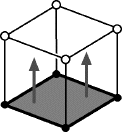
|
| Before we try to glue a cube, let's do an easier example together. We can form a cylinder by taking a piece of paper and gluing 2 opposite sides together (try this). I could explain this to 2D Marge by drawing a square and then giving the gluing instructions as follows: |

|
From Davide Cervone's Folding Cubes and Hypercubes:
"The following movie shows an unfolded cube (red) in space, together with its shadow (pink) on the plane below. The white dot at the top of the image represents the light source. As the red cube folds up, we can follow the results in the shadow below. As the sides of the cube begin to fold up, the shadows of these squares become distorted (one edge is closer to the light than the opposite edge, so one edge has a larger shadow than the other).... We rotate the whole arrangement so that we see only the shadow of the cube and must imagine the three-dimensional cube unfolding that causes these shadows." After you click on the link on today's lab, use the
 Play Button to watch
Davide Cervone's
Folding Cube Movie.
Play Button to watch
Davide Cervone's
Folding Cube Movie.
| Label gluing instructions on the figure to show which sides you would glue together in order to form a cube. I have started you off by labeling a set of 1s to be glued together. You will need to glue 6 more sets of edges together, so give the instructions by labeling 2s to be glued together, 3s, and so on. We could give these gluing instructions to Marge and explain that while the figure can't be glued in 2D, there is enough room to perform the gluing in 3D. | 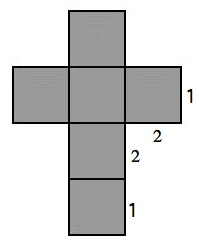
|
Torus - A Euclidean Universe A torus is a mathematician's name for a donut. The surface of a torus is the topological space found in old-style video games such as Pac Man, where a spaceship goes off the right-hand side of the screen only to reappear on the left, or off the top to reappear on the bottom.

| If you take a sheet and try to glue the left edge to the right edge (the single arrows tell you to do this) and the top edge to the bottom edge (the double arrows tell you to do this), the paper will crumple up and you'll get a big mess. |
| But, we can do this identification of a square with a stretchy piece of rubber. First we identify the left and right hand side in order to form a cylinder. We use these arrows and the points that correspond to glue the top and the bottom together and this forms a donut or torus. | 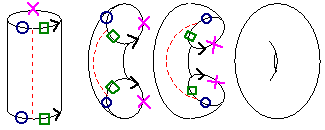 |

| Here we glue the side with a number on it with the side that has the same number on it. It is an exercise in visualization skills to see that the resulting figure is a 2-holed donut. Here are directions for sewing the 2-holed donut that may be helpful for visual purposes. | 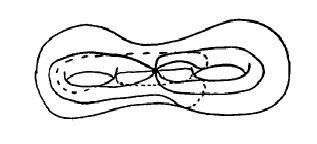 |
To understand why the laws of Euclidean geometry that you learned in high school do not apply to the 2-holed donut, we can look to see whether octagons will tile the plane in the same way that Escher created his works of art. So we would like to know whether we can take a certain number of octagons (instead of birds like Escher took in the Euclidean Sun and Moon work, or angles and devils like Escher used in the distorted hyperbolic Heaven and Hell work...) and put them together around a vertex in order to form 360 degrees.
How much of 360 degrees is left over when two octagons are placed side by side like
 ?
__________________
?
__________________
What happens if you try and place three octagons together at a vertex? Do they fit into 360 degrees? __________________ If so, we could create a flat tiling work of art (like Escher) without distorting them. If not, then we must distort them in order to create a flat work of art.
We can create a hyperbolic 2-holed donut by using a hyperbolic octagon with 45 degree interior angles. Eight of these glue together in hyperbolic space to form 360 degrees at a vertex and so they tile the space. The laws of hyperbolic geometry hold for this work of art and we now understand some of the issues that Escher faced.

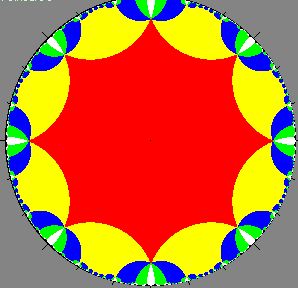
Klein Bottle - A Euclidean Universe
 |
Notice that this identification labeling of a square looks similar to the one that resulted in a torus, but the top and bottom edges are glued with a twist - a reflection in the line between the midpoints of the sides. Just as a 2D Flatlander could not imagine how to construct a cylinder out of a piece of paper, we have problems figuring out how to put together this square, because when we label corresponding points (such as the green squares, which are the same in this space because they are identified via the reflection in the dotted line), there seems to be no way to glue them together. However, an inhabitant of 4-space would have no trouble because he would have enough space to glue the edges together. |
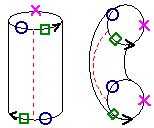
|
| Try forming the Klein bottle slinky. There is only one way to for us to put this space together when we identify like-colored points using a slinky by having the slinky pass through itself. Where you able to form the Klein bottle slinky? ____________ | 
Klein bottle |
| Tiling View Both the Klein bottle and torus satisfy the laws of Euclidean geometry from high school because we can tile the plane with a square - four 90 degree angles come together at a vertex to form 360 degrees. If we sketch what a creature living in the place would see in all directions, this is called a tiling view. The top left is really just below the bottom right in this Klein Bottle universe because they are identified by the mirror reflection. However, if we look off to the right or left, we see exactly the same image instead of the reflected one. | 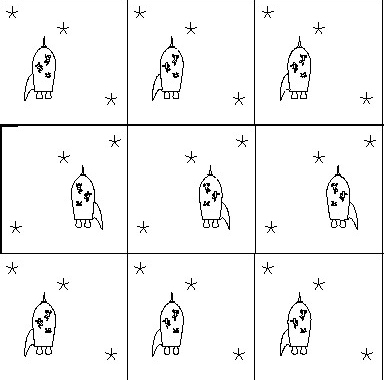 |
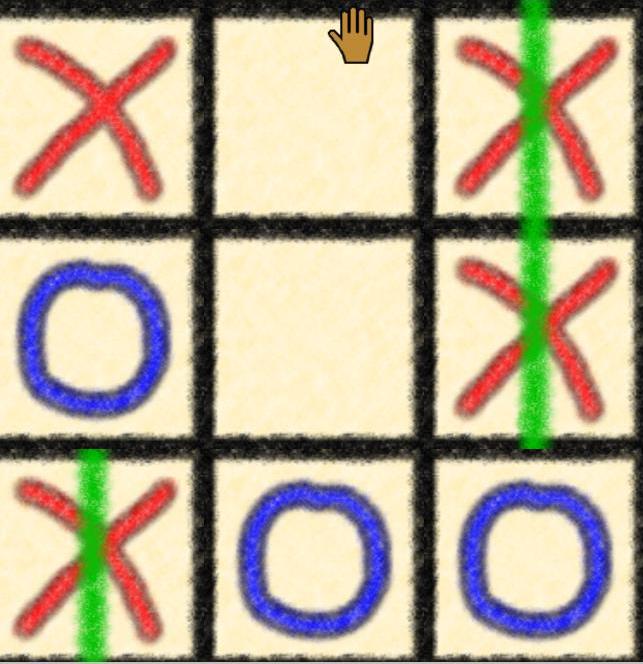 |
Experience what it is like to live on a Klein Bottle by playing
Klein Bottle Tic-Tac-Toe.
* Download the Torus Games for Mac OS 10.3.9 or later (2.5 MB) and then double click on the file titled Torus Games. * Using the Game menu, select Tic-Tac-Toe. * Using the Options menu, change to Human vs. Human. * Using the Topology menu, change to Klein Bottle. * You are allowed to scroll the board (once a square has been labeled X or O, you can click on it, hold down, and move the board around to see the identifications) in order to help develop your intuition. Try this. Notice that the top left square is really just below the bottom right square in this Klein Bottle universe. * Use Esc to go to the options, and click Erase Tic-Tac-Toe Board under the Game menu in order to bring up a new game. |
Winner - best out of 3______________________
Next play without scrolling the board. It may help if you sketch a tiling view on a piece of paper as you make your moves:
| No Scrolling Winner - best out of 3______________________ | 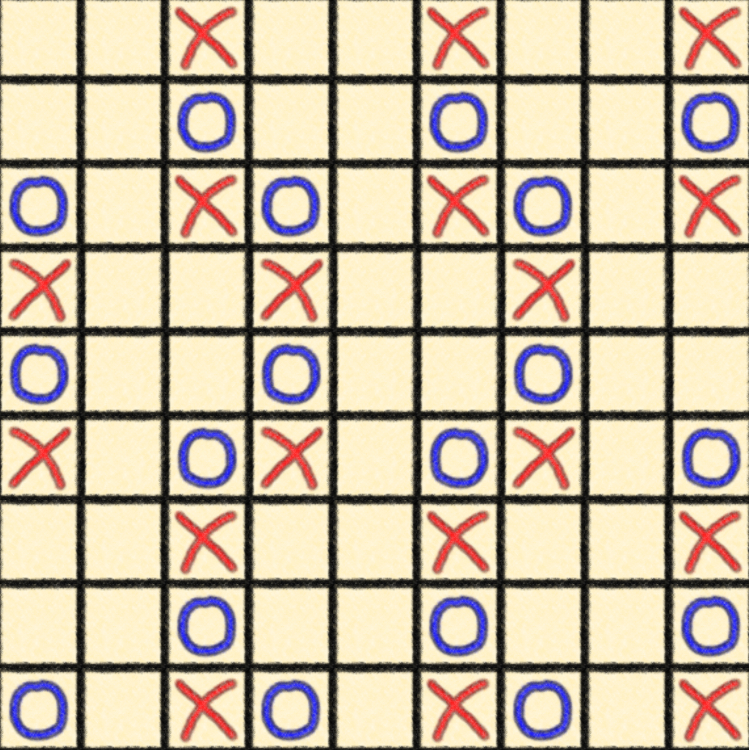 |